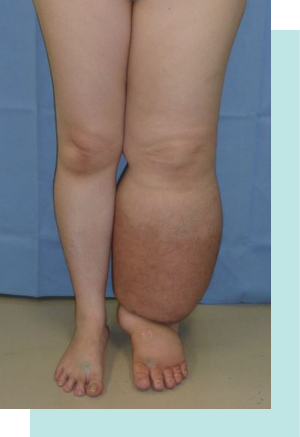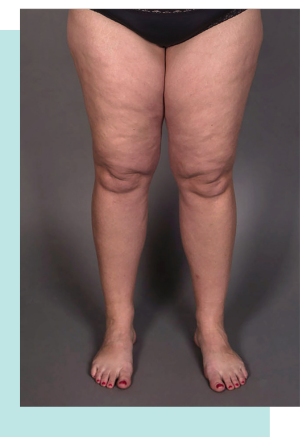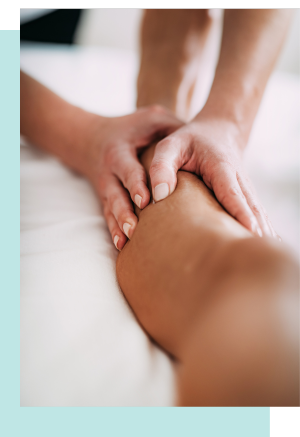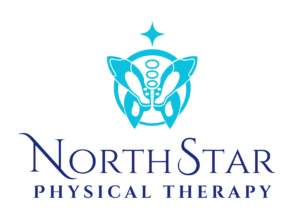Lipedema vs Lymphedema –
Is it fluid or is it fat?
By: Dr. Shirlea North, PT, GCS, CLT

Before we answer this question, we first need to dive into what in the world is lymphedema and lipedema. There is a difference in diagnosis and treatment and people deserve to know that both are chronic and potentially progressive, but are completely manageable and do not define a person.
Lymphedema is an accumulation of protein-rich fluid that collects outside of lymphatic vessels from idiopathic and congenital causes as well as secondary to a variety of reasons such as side effect of chemotherapy and radiation from cancer treatments, scar tissue from surgery, increase in body fat, etc., and can affect both men and women alike. As a Certified Lymphedema Therapist (CLT), I am often asked, “how did I get this? What caused my swelling?”
Just like any diagnosis of exclusion, which means this is diagnosis is often made once other more life- threatening causes are ruled out like heart and lung conditions, it is typically the last diagnosis a client hears before getting referred to a CLT to start their healing journey. Many times the presentation of lymphedema is initially unilateral or one sided and may come with changes of the skin to a reddish color, hardening or thickening of skin, dryness of skin, possible fluid-filled blisters and wounds.
These can lead to infection and reduction of range of motion and mobility which perpetuates the issue. The signs are caused by having the denser lymphatic fluid that is located directly under the skin or superficially, and essentially creating a block between the blood with nutrition getting to the site to heal. Now, there are superficial and deep lymphatic vessels and this fluid must travel from the superficial lymphatic vessels like a train to the deep lymphatic vessel stopping at lymph nodes along the way to filter out any proteins that can be recycled in the body and eventually making its way to the kidneys and bladder and you pee it out. Yes, part of your urine was once lymphatic fluid!
Then there is lipedema. This is an abnormal and chronic accumulation of increased fibrotic fat tissue that resides superficially or right underneath the skin. Sound familiar? However, it is more of an abnormal connective tissue development and often seen with hypermobility or very flexible muscles and joints. It is associated with hormonal changes and almost entirely affects women starting from puberty and can be exacerbated around menopause.

Now that you know how any accumulation of a substance underneath the skin can cause the skin to be stretched and potentially change color, imagine if it is a fatty tissue that is hard and thickened more than cellulite. The symptoms are bilateral, or affects both sides of the body, and can cause significant skin sensitivity, and can have a hard time with clothes fitting and participating in simple activities like tolerating sitting in a chair without being squished and in pain. You have seen these women as the “pear-shape” is taken to the extreme, where the top half presents proportionally and the bottom half is much wider and often have saddlebags on the hips. With possible progression of this abnormal accumulation, it can progress to the trunk and upper body.
There is another time and place to discuss healthcare access and disparity to the female population, but this group of people are often passed off by healthcare professionals assuming it’s “just cellulite and you need to go on a diet, exercise and possibly get a bariatric surgery.” That is the last thing they need to hear! The fatty tissue that is present in lipedema is not affected by diet and exercise alone and is pathologically not the same as cellulite and should be treated as such. Like lymphedema, this is a diagnosis of exclusion and by the time the client gets to me, they are frustrated with the healthcare system as a whole, they have been passed from provider to provider, and flat out disrespected as a person.

Now, you can understand that if someone has lipedema, there is that thick, hard fibrotic fat pad that now acts as the Great Wall of China to the lymphatic fluid from being recycled and flowing, and then the accumulation of fluid begins and thus lipo-lymphedema. Regardless of the condition, lymphedema or lipedema, there are conservative measures that can be taken with the correct guidance and individualization of a program from a CLT.
Lymphedema has developed a standard practice of Complete (or Complex) Decongestive Therapy or CDT to treat and manage this chronic and (can be) progressive condition. Treatment includes the use of manual lymphatic drainage (or MLD) which is a sequential and gentle mobilization of the lymphatic fluid to direct it to the closest lymph nodes and vessels to continue its journey. A CLT will also implement multi-layered compression bandaging along the extremity or body region to assist the lymphatic flow without compression too much to cause damage to these fragile structures and in a sequential way as these vessels do not have muscular tissue around it and need that extra assistance to carry the static fluid along.
Within CDT program, there is also prescription of client-specific exercises to have the deeper muscular tissues act a pump to assist the fluid to travel to the deep vessels and to the body’s ultimate muscular pump, the heart. There is also education along the way with skin and nail care, proper elevation, and dietary and hydration considerations to reduce fluid retention to an already stressed system. This is all in the initial, intensive phase of therapy with a transition to the maintenance phase, which includes continued self-MLD technique, continued exercise and skin and nail care, and appropriate medical-grade gradual compression garment to maintain the lymphatic drainage and the new circumference and shape of the affected area. Along the client’s treatment, there may be modifications to the treatment to satisfy compliance with a maintenance program that may not be considered “gold standard” but is something rather than nothing for the sake of compliance.
Lipedema is initially treated similar to lymphedema, however with a major difference. Because this condition has a structural impediment, the ultimate treatment is surgery to physically remove the blockage whether through manual-assisted or waterjet-assisted lymphatic sparring surgery. Now wait, I mentioned that a cause of lymphedema can be from surgery, and yes it is! This is why many surgeons who specialize in lipedema treatment and subsequently many insurance companies require a course of conservative treatment including CDT. The idea here is to stimulate the lymphatic system as a prehab so that post-operatively the development of secondary lymphedema is significantly reduced. Another difference is the use of compression garments prior to any possible surgical intervention is typically lower compression strength than those with lymphedema because of the hypersensitive symptom that is unique to clients with lipedema.
Please keep in mind that every treatment plan and client is different and all the more reason to seek a therapist that is a CLT who can be your best advocate, coach and partner in developing the right plan for you or your loved one. As an allied healthcare practitioner, physical therapist and a CLT in the Northern VA region, I would love to see the knowledge within the community, both medical and laymen communities, to recognize both of these conditions, lymphedema and lipedema, sooner and collaborate with the client’s needs as a priority to optimize their health and wellness.


Northstar Academy Resources
Check out my Lymphatic Wellness E-book where it dives a bit deeper into the conservative measures that you can start today!
Northstar Academy Resources

Check out my Lymphatic Wellness E-book where it dives a bit deeper into the conservative measures that you can start today!
Northstar Podcast
Follow me on my podcast, NorthStar Physical Therapy for quick, realistic and down-to-earth education and evidence based medical information on lymphatic conditions, lipedema, pelvic health conditions and chronic and progressive neurological conditions like Parkinson’s, stroke and Multiple Sclerosis.







